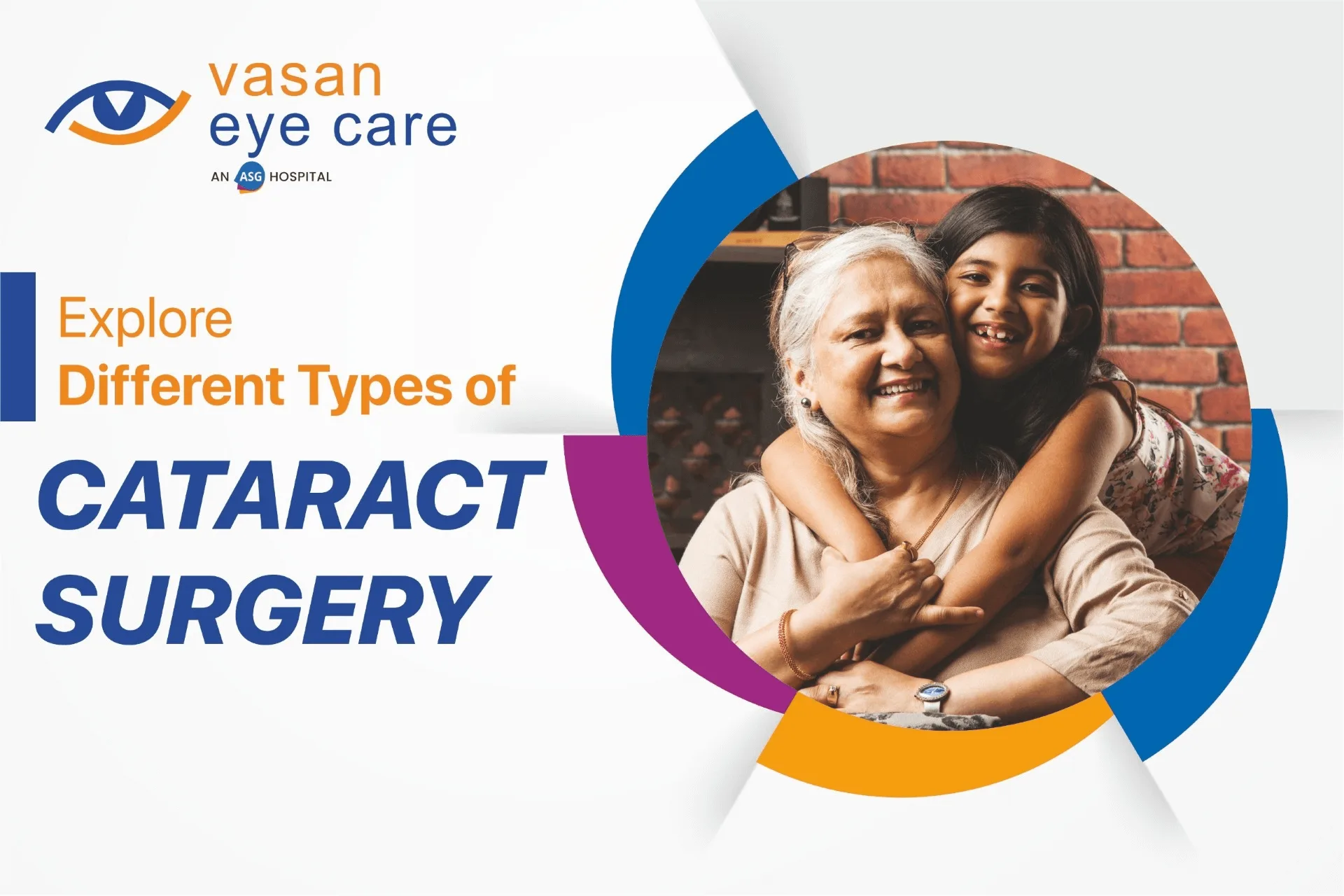Cataracts are one of the most common causes of vision loss, mainly affecting older adults. When the eye’s lens becomes cloudy, the patient begins to notice a blurring of their vision. However, cataract surgery is one of the safest and most successful surgeries performed on millions of eyes yearly. Since you will be facing cataract surgery in the future, it certainly begs the question: what type of surgery would be more beneficial for you?
Let’s understand the various options for cataract surgery and break them down into simple terms so that you fully understand each procedure and make an informed decision.
What is cataract surgery?
Before getting into the types of cataract surgery, let’s quickly take a brief explanation of the cataract surgery procedure. Cataract surgery is a surgical process that involves the removal of a cloudy lens. In most cases, surgery is usually combined with the implantation of an intraocular lens (an artificial lens) to restore clear vision and alleviate cataract symptoms.
The final vision-enhancing goal of cataract surgery is similar in all cases, but there are different techniques and types of cataract surgery to meet diverse needs. Let us find out!
- Phacoemulsification (Traditional cataract surgery)
It is a minimally invasive procedure, most commonly done under local anesthesia, so you won’t feel any pain, although you remain awake throughout the procedure.
The surgeon will make a small cut in the eye, and then, an ultrasound wave breaks the cloudy lens into small pieces, and then those pieces are sucked out through the digital suctioning process.
It is advisable to wear an eye patch for some time after surgery to protect the eyes while healing. Usually, most people quickly recover and their vision is restored in merely a few days.
This surgery is best for those with common cataracts, with no serious eye health problems or complications. - Laser-Assisted Cataract Surgery
Laser-assisted cataract surgery is a more advanced technique. Instead of a traditional surgical blade, a laser is used to cut.
The surgeon uses a laser to perform the key steps of cataract surgery: making the cut, fragmenting the cataract, and even softening it for easier removal. This technology helps improve precision.
This technology speeds up postoperative recovery and lowers the risk of complications since the laser precisely removes the cataract and positions the IOL.
This is specifically true for those with more complicated Anatomic ocular structures or patients looking for the latest options. - Femtosecond laser-assisted cataract surgery
This is more advanced and a notch higher than the usual laser cataract surgery. The femtosecond laser works with incredible precision, combining super-quick pulses of light to perform various steps.
This includes making a cut or incision, breaking up the cataract, or even shaping the cornea. This increases precision and customization tailored to your particular eye structure.
Like laser-assisted surgery, femtosecond laser cataract surgery is one of the safest, most accurate, and offers a quicker recovery.
It is often recommended for those with complicated cataracts or particular vision needs. - Small incision cataract surgery (microincision)
This surgery is a modification or variation of the traditional cataract surgery and involves even smaller incisions.
As mentioned in the name of the surgery the size of the cut in this surgery is very small (usually 1-2 mm in size), which may lead to faster healing and less disruption in the eye.
Due to the smaller incisions, there tend to be fewer complications and a generally quicker recovery.
Good for patients who want something easier on the eye, with less risk and quicker healing thereafter. - Extracapsular Cataract Extraction (ECCE)
ECCE is an older or more effective technique for cataracts, used for patients with more complicated cataracts that cannot easily break up with phacoemulsification.
In this technique, surgeons make a large cut (about 10- 12 mm) to remove the cloudy lens in one piece and leave the lens capsule intact. After the cataract is removed, an artificial intraocular lens is implanted.
ECCE is longer but certainly safe for dense cataracts or when phacoemulsification does not apply. It can even treat other eye conditions or complications that require a more thorough action.
So, Which Type Is Best for You?
The choice of cataract surgery depends on various factors, including your overall health, eye condition, personal preferences, and budget. Here’s a quick guide:
- For most people with standard cataracts: Traditional cataract surgery (Phacoemulsification) works wonders and has an excellent track record.
- For those seeking the latest in precision and faster recovery: Laser-assisted cataract surgery, especially femtosecond laser surgery, could be a great option.
- For patients with specific vision goals or complicated eyes: Premium IOLs or laser-assisted surgery may be the best fit.
- For those looking for the gentlest option with minimal incisions: Small incision or microincision cataract surgery might be the way to go.
Cataract surgery is an incredibly effective way to restore clear vision and improve your quality of life. All of the procedures have high success rates. The best choice for you depends on your individual needs and preferences. We invite you to consult with our best eye surgeons at Vasan Eye Care who will guide you towards the best procedure based on your eye health, lifestyle, and goals. Cataract surgery isn’t just about getting your vision back — it’s about getting the right vision for your life.



